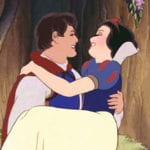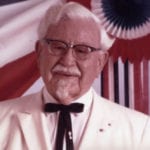 Weird Stuff
Weird Stuff  Weird Stuff
Weird Stuff  Mysteries
Mysteries 10 Tragic Disappearances and Deaths in Joshua Tree National Park
 History
History 10 Ways Childhood Really Sucked in the Old West
 Music
Music 10 Name Origins of Famous Bands from the 1990s
 Religion
Religion 10 Biggest Turnarounds by the Catholic Church
 Weird Stuff
Weird Stuff 10 Unbelievable Times Laws Had Unintended Consequences
 Humans
Humans Ten Historic Women Who Deserve Way More Credit Than They Got
 Movies and TV
Movies and TV 10 Films That Spawned Major Lawsuits
 History
History Ten Times Towns Were Wiped Off the Face of the Earth
 Creepy
Creepy 10 of the Most Disturbingly Haunted Public Houses in the UK
 Weird Stuff
Weird Stuff 10 Niche Subcultures That Are More Popular Than You Might Think
 Mysteries
Mysteries 10 Tragic Disappearances and Deaths in Joshua Tree National Park
 History
History 10 Ways Childhood Really Sucked in the Old West
Who's Behind Listverse?

Jamie Frater
Head Editor
Jamie founded Listverse due to an insatiable desire to share fascinating, obscure, and bizarre facts. He has been a guest speaker on numerous national radio and television stations and is a five time published author.
More About Us Music
Music 10 Name Origins of Famous Bands from the 1990s
 Religion
Religion 10 Biggest Turnarounds by the Catholic Church
 Weird Stuff
Weird Stuff 10 Unbelievable Times Laws Had Unintended Consequences
 Humans
Humans Ten Historic Women Who Deserve Way More Credit Than They Got
 Movies and TV
Movies and TV 10 Films That Spawned Major Lawsuits
 History
History Ten Times Towns Were Wiped Off the Face of the Earth
 Creepy
Creepy 10 of the Most Disturbingly Haunted Public Houses in the UK
12 Shocking Ways Old Hollywood Was Brutal to Its Movie Stars
The Hollywood we recognize today originated in 1908. That year, the movie The Count of Monte Cristo was released, and the industry was off to the races. Just three years later, the first movie studio was established on Sunset Boulevard in Hollywood. Quickly, it attracted many other film companies to California.
In 1920, sound technology was introduced to film. Almost immediately, that led to a shift in movie studio goals. Actors began working for them rather than independently. During this time, MGM Films, Twentieth Century Fox, and Paramount were considered the most prominent studios in the industry. They paid their biggest stars well. But they also controlled their lives down to every little detail.
Studio boss Eddie Mannix of MGM was one of the key figures in the film industry who worked hard to safeguard the reputation of their celebrities. And he wasn’t the only one. The Hollywood of yesteryear was known for its glitz and glamor. Men like Mannix were rumored to have the ability to cover up any mishap that occurred to his actors. That included minor incidents such as car accidents and unexpected pregnancies. It also included far bigger scandals.
All through the Golden Age of Hollywood from the 1920s through the 1950s, studios and their bosses exerted almost unbelievable control over their stars. Throughout those golden years, Hollywood’s handlers have held their A-list celebrities to strict rules and jaw-dropping demands. In this list, we’ll look at 12 of the most stringent regulations that were enforced upon film stars and celebs during Hollywood’s Golden Age.
Related: Top 10 Most Brutal Downfalls In Hollywood History
12 Sign a Long-Term Contract or Else
As the roaring 1920s began, film studios in Hollywood sent out their talent scouts to find new actors to turn into celebrities. These scouts sought out promising performers and signed them to contracts. The legal documents often lasted several years or longer and were meant to safeguard the financial interests of the studios far more than the performers. Under these agreements, actors were typically restricted to working with a specific studio for many, many future movies.
Essentially, they were not allowed to leave the contract unless they were released after the studio felt they were unprofitable. And when they were tired of working or otherwise exhausted, studios would do whatever they wanted to do to keep them going. If an actor’s relationship with the studio was not satisfactory, they were stuck in the contract for the duration outlined by the studio. Nothing would get them out of the agreement, and they had to follow it to the letter to get paid.
Now, at first glance, it may have appeared that these celebrities were generously compensated for their on-screen work. Some Hollywood icons were earning as much as $5,000 per week. That’s a ton of money in 1920s dollars! However, as an actor’s fame increased, their salary did not typically follow suit. The contracts locked their rates in place, and they were stuck there no matter how successful they became. These contracts were not limited to actors, either.
They also applied to directors, writers, producers, cinematographers, art directors, and technicians. Everyone behind the scenes was held to very limiting, studio-friendly deals. If they didn’t sign, they didn’t work. This “studio self sufficiency,” as it was known, made the production process more streamlined for a while. But it came at the cost of the actors’ artistic freedoms. Still, for decades, stars could do little about the system in place.[1]
11 Stay Loyal or Get Blacklisted
As we’ve seen, during Hollywood’s Golden Age, actors were bound by contracts to specific film studios. This made it very difficult for them to explore new roles and opportunities with rival companies. While these contracts often came with perks and benefits, they also required a level of loyalty that limited the artistic range of A-listers.
In rare cases, there were occasions where actors were granted temporary releases to work with other studios on certain films. This arrangement, referred to as “loans,” would be closely monitored by the primary studio to ensure the actors upheld a positive image.
A prime example of this was Elizabeth Taylor, who was under contract with MGM until 1960, yet was given the freedom to take on a variety of projects with other studios. These projects included more daring themes such as extramarital pregnancies, homosexuality, and cannibalism. They showcased a different side of the actor from her work with Metro Goldwyn Mayer.
But that level of “freedom,” as limited as it was, didn’t happen for most stars. In reality, actors were bound by their contracts and held closely to the studios. If they didn’t fall in line, they could be blacklisted from the industry altogether. Take the case of Olivia de Havilland, who rose to fame through her role in Gone With the Wind. For de Havilland, who had been under contract with Warner Bros. since 1935, she quickly grew tired of the limited and shallow characters she was offered. Soon, she refused the parts the studio would give her.
The repercussions of her actions were severe. For years, de Havilland was effectively shut out of the industry. Behind the scenes, Warner Bros. executives spread the word to other studios not to give her employment because of her difficult attitude. All because she wanted to have the smallest amount of choice in what movies she filmed! Hollywood may have looked like a place where stars live out their dreams, but the situation behind the scenes was often tense and uncomfortable.[2]
10 Never Refuse a Role!
Actors were trapped in binding agreements with their studios in this way. It left them little to no control over the roles they were given. Many chose to comply with the status quo, as they didn’t want to lose their jobs. But de Havilland took a different approach. In defiance of Warner Bros, the studio that had signed her in 1935, de Havilland refused to accept the simple characters she was being offered.
In an interview years later, the longtime star lamented how “those roles were intended simply to fill the routine function of ‘The Girl.’” And de Havilland wanted more. As a result, she began turning down roles. That was unheard of in the 1930s and 1940s, and it enraged studio bosses. Immediately, Warner Bros. suspended her from their set without pay. This came at the peak of her career when she was still under the age of 30. So de Havilland lost considerable money, fame, and clout by choosing to stand for her principles.
However, de Havilland was determined. She also knew that the system was unjust. Not being able to refuse a role stood against everything that should be good and fair, she wanted to fight back. She used the legal knowledge provided by her attorney father and took Warner Bros to court. After years, she emerged victorious. In 1943, Labor Code Section 2855—popularly known as the “de Havilland Law”—went into effect.
It was also known as the “seven-year rule” on contracts, and it helped to dismantle the studio system. No longer would actors be forced to work forever for studios, no matter what. Sure, seven years was still a long time. (And that would soon change, too.) But the rules about never refusing a role, which had been in place for decades, were starting to crack. As one de Havilland biographer later succinctly noted, “it was a major brick in the downfall of the control of the studio system.” But that still didn’t mean life was easy for Hollywood stars.[3]
9 Change Your Name for Fame
Throughout Hollywood’s Golden Era, it was a common occurrence for actors to have their names altered by the studios that propelled them to fame. Judy Garland, Marilyn Monroe, and Natalie Wood were among the countless stars whose legendary identities were fabricated by the industry. The motivations behind these name changes were varied. However, it was often done to create a certain image or persona.
At the time, many studios wanted white stars only—with at least the appearance of traditionally-white backstories. For example, Margarita Cansino, the actress who famously played Gilda, underwent a name change to distance herself from her Spanish heritage. Studio bosses demanded that she appear more “all-American” on screen. This rebranding effectively erased any trace of her ethnic background. And she was far from the only one.
The actress Lucille LeSueur was forced to change her name by a high-ranking MGM executive who found her birth surname to be distasteful. Her stage name? Joan Crawford. But Lucille actually hated the name. Over the years, she wished she’d never taken it for fame. In the exposé The Star Machine, Crawford is said to have deeply detested her new name as her career developed. She felt it reminded her of a crawfish—and not a bombshell actress.
Name alteration was not only restricted to female stars, either. Male actors also had to go through this identity-wiping process. A notable example would be Archibald Alexander Leach. Paramount Studios hated that mouthful of a name, and transformed the star behind it into none other than Cary Grant.[4]
8 While You’re at It, Change Your Appearance Too
The co-founder of Metro-Goldwyn-Mayer Studios, Louis B. Mayer, once proclaimed that creating a celebrity was very much a behind-the-scenes process. “A star is made, created, carefully and cold-bloodedly built up from nothing,” he boasted. And he sure wasn’t lying. During the Golden Age of Hollywood, this statement held true.
Mayer believed that a star’s face was the most crucial aspect. If they photographed well, the studio could take care of the rest. The pressure was on stars to maintain a perfect jawline and clean, clear look. If they didn’t—or if they began to age—Mayer had a fix for that too.
Hollywood heavily supported the use of plastic surgery as early as the 1920s. That had been a nearly unheard-of practice worldwide at that time. But in Hollywood, the pressures were great, and the surgeries were common. Procedures such as nose jobs and facelifts were being performed on aspiring stars. The relatively paltry healthcare of the era sometimes made recovery from those surgeries very dangerous.
Aspiring stars in the entertainment industry were expected to be open to altering their physical appearance. Many had to transform their image entirely if they ever hoped to work in the business. One notable example was the actress Rita Hayworth. She underwent grueling electrolysis procedures for more than two years to change her hairline.
Similarly, Marilyn Monroe, originally named Norma Jeane Mortenson, was transformed into the iconic blonde bombshell through hair bleaching and straightening. She actually had dark brown, curly hair when she first got to Hollywood. But aggressive agency head Emmeline Snively plainly told Marilyn, “Look, darling, if you really intend to go places in this business, you’ve just got to bleach and straighten your hair because now your face is a little too round.” The shockingly blunt advice stuck, and the rest is history.[5]
7 Take Brutal Criticism About Your Career
During the Golden Age of Hollywood, looks held great weight. But that did not mean that any attractive person could automatically act. In fact, studios were willing to invest substantial sums in acting lessons for their top-tier billings. As Shirley Temple wrote in her autobiography Child Star, as she was on the rise in Hollywood in the early 1930s, Fox executive Winfield R. Sheehan informed her and her mother that due to her “potential,” they insisted she take acting lessons. For the studio, they were willing to incur the high cost.
Similarly, after signing her first contract with MGM, Ava Gardner was asked to take classes as well. But studio bosses were far harsher with their assessment of her abilities. During Gardner’s initial screen test with the studio, a representative reportedly stated, “She can’t act; she didn’t talk; she’s sensational.” Criticism came without much cushion! And along with necessary acting classes, Gardner was also forced to take vocal lessons. Studio heads wanted her to ditch the southern accent and sound more cosmopolitan.
Gardner was far from the only one who received mandatory coaching. And she wasn’t the only star who was brutally evaluated while on screen. Lauren Bacall was given vocal coaching to develop her distinct “low, alluring voice.” Thank goodness she did because that would eventually become her trademark. But according to Bacall’s autobiography By Myself, director Howard Hawks’s views on the matter were particularly cruel. He emphasized the importance of daily self-practice in maintaining a lower pitch.
As Bacall remembered, Hawks once told her, “when a woman gets excited or emotional… there is nothing more unattractive than screeching.” Clearly, Hollywood work was not for sensitive souls. It was best to take the criticism to heart and improve on it—or you’d quickly be out of a job.[6]
6 Accept This Phony Backstory about Your Life
Nothing you see in Hollywood is real. Everything is fake, phony, and carefully crafted by publicity experts, studio bosses, and executive producers. It’s true in the modern era, and it was certainly true back then during the years of Old Hollywood. Throughout the Golden Age, studios preferred to typecast their stars. Or so it seemed. Often, studios’ publicity departments simply gave viewers the impression that the stars were all similar. To do so, they would go to great lengths to sanitize unlikable details from celebrities’ earlier lives.
Take Joan Crawford, who was born Lucille LeSueur and raised through a particularly difficult childhood. MGM made sure to wipe her past from view, even boasting that the actress came from an elite East Coast family. They even held a public contest at one point to allow fans to pick her name! “Tiring of the social life of a debutante,” a 1925 advertisement in the serial paper Movie Weekly boasted, “she has left home to become an actress.” And with that, an entire biography was born.
Crawford was far from the only one, though. When Judy Garland became pregnant, MGM worried about ruining her “innocent” image with fans. So they ordered her to “take more speed” to alter her weight gain. Meanwhile, publicists sent rumblings to tabloids about how Garland “ate like a truck driver” to try to take the focus off her belly.
For many stars, the phony backstories became a burden for the rest of their lives. Rita Hayworth was never able to shake off the “femme fatale” brand that came with her star turn in Gilda. She once mused that “every man I knew went to bed with Gilda and woke up with me.”
And the leading men of Hollywood were no different. Legendary actor Cary Grant once mused that “everyone wants to be Cary Grant” before adding, “even I want to be Cary Grant.” The backstories were too alluring for even the stars themselves to ignore.[7]
5 Work with No Breaks–and Pop Pills to Keep at It
During the heyday of Hollywood, films were produced at an astonishing pace. Studios created a staggering 7,500 feature films between 1930 and 1945. This breakneck production schedule put actors under immense pressure. Quickly, studios had to come up with a solution. And it was one that was awful: They simply fed their leading actors pills.
According to the Twentieth Century Fox doctor, Lee Siegel, it was often very common to use medication in order to keep stars going even when they were tired. And whether or not the film star wanted to be drugged! Siegel went on to say that by the early 1950s, “everyone was using pills.” It was a brutal regimen that often led to addiction and its devastating after-effects. But in the short term, studio bosses could keep their stars working and make money by producing movies.
One of the most widely recognized instances of exploitation occurred with the renowned performer Judy Garland. The actress and singer, best known for her role in The Wizard of Oz, was allotted only a one-day break each week. She was frequently required to endure 18-hour stretches of continuous singing and dancing on the other six.
To sustain her energy levels, the studio supplied her with amphetamines. They also administered sleeping pills in the evenings so she could come down from the high. Unfortunately, when she attempted to seek medical help or therapy, any delays in filming would result in deductions from her salary. At one point, she was in debt to MGM for more than $100,000.
Tragically, at the age of 47, Garland passed away from a drug overdose. Many historians today now recognize just how short her life was cut because of the on-set situation.[8]
4 God Forbid Any Leading Lady Gain a Pound
The attractive figures of the leading ladies from Hollywood’s Golden Era were not regularly shown off by accident. In fact, maintaining a slender physique was a strict requirement imposed upon them by studios. Gaining weight was deemed unacceptable. Contracts even had clauses forbidding it. Before any big promotion, new talents were put under examination by studio executives. Many times they were accompanied by a dietitian.
Sadly, the studios were not shy in displaying their expectations. Sometimes, they even bickered at female stars in a truly terrible manner. For example, MGM executive Louis B. Mayer once referred to Judy Garland as “a fat little pig with pigtails.” He insisted she stick to a diet of only chicken soup, black coffee, cigarettes, and pills to keep her weight in check.
When she arrived in Hollywood in the 1920s, Swedish actress Greta Garbo was confronted with a harsh reality. Quickly, she was allegedly told by a producer that American audiences “don’t like fat women.” Shocked at the statement, Garbo acted accordingly. The actress resorted to eating only spinach for a prolonged period.
In addition to monitoring their diet, female actors of that era also had to maintain an active lifestyle. One example of this was Marilyn Monroe, interestingly enough. She was known to engage in weightlifting, which at the time was not a common practice for actresses. Monroe shared in an interview with Pageant in 1952 that she would spend a minimum of 10 minutes each morning exercising with lightweight dumbbells.
Like many female stars of her day, she felt endless pressure to stay thin and would go to great lengths to do it—no matter the physical toll on her body.[9]
3 What Love Life?
Despite the sparkling allure of on-screen romance depicted in films from Hollywood’s Golden Age, the reality off-camera was not always happy. The studios wielded significant influence over the personal lives of their actors. Real-life romantic relationships were often subject to approval—and many were banned outright. An example of this occurred in 1942, when Boys Town actor Mickey Rooney informed MGM studio head Louis B. Mayer of his plans to wed actress Ava Gardner.
Mayer uncompromisingly declared, “I simply forbid it. That’s all. I forbid it.” Rooney was finally able to have a private ceremony. But others were not as fortunate. There were even whispers that actress Jean Harlow had been prohibited from marrying William Powell because of a nasty clause in her contract.
Navigating the entertainment industry was even more difficult for actors who identified as gay in that era. Through the Golden Age, movie studios would often force these performers into sham marriages with other stars. That, the bosses felt, was a way to conceal their true identities from the public and still make the stars marketable.
Additionally, abortion was widely accepted in Hollywood throughout the first half of the 20th century. At the time, it was even viewed as a routine form of “body maintenance.” One anonymous actress explained to reporters that in that era, “abortions were our birth control.” The studios could ill afford to lose an actress while she brought a baby to term. So they coldly took care of things whether the woman wanted it that way or not.[10]
2 Follow Rules about What to Wear Too
Prior to the onset of World War II, the style of clothing worn by women in America was far more formal and conservative than it is today. Despite the emergence of French designer Coco Chanel, who began incorporating elements of men’s clothing, such as pants, into women’s fashion in the late 1920s, societal norms remained rigid in the United States. In 1938, for instance, a woman in Los Angeles was actually incarcerated for five days for the crime of wearing pants inside a courtroom.
The film industry was no exception to this trend. A 1933 article from Movie Classic magazine states that studios issued formal directives instructing their female actors to avoid being photographed or quoted in clothing traditionally worn by men.
Hollywood in the 1930s and 1940s was known for its strict dress code. It required actresses to wear dresses and skirts in public and on set. Women who wore pants were considered to be breaking the rules. They could even be turned away from businesses and public establishments. Despite being a German import, even Marlene Dietrich was not immune to these rigid fashion expectations. There are accounts of her being denied entry to the fashionable Brown Derby restaurant in Los Angeles simply because she had dared to don trousers.
However, it was none other than Katharine Hepburn who ultimately helped to bring an end to the industry’s inflexible sartorial regulations. She refused to conform to the stereotypical mold of a Hollywood actress on set. When RKO’s costume department attempted to confiscate her pants one day, she protested by parading around the studio in her undergarments. Eventually, thanks to her bold stance, Hepburn successfully reclaimed her pants. In time, it slowly began to pave the way for a new era of fashion freedom among her fellow actresses.[11]
1 Get Ready to Be Spied On
With big money being made on set, studio bosses wanted tight control of what was going on. So naturally, these aggressive and overreaching resorted to spying on their charges to ensure efficiency and productivity. Often, studio bosses would hire spies to work on set and observe the behavior of the production’s biggest stars. They could be any staffer. Usually, celebrities would never even suspect the janitor, the driver, or a catering waiter of being sent to spy on them around the clock.
In the worst of these cases, Judy Garland’s trusted assistant Betty Asher was hired to spy on the star for years. Every week, Asher would report back to MGM with notes on who Garland was spending time with, what she was eating, and what she was doing while away from the set. When Garland finally learned of Asher’s role years later, she was devastated. “I can remember crying for days after I found out what she was doing to me,” Garland remembered about the sobering revelation.
It wasn’t just actors who studio bosses chose to spy on, either. Hollywood was far too big a business to leave any employee to chance like that. So movie directors were tasked with keeping an eagle eye on all kinds of production employees. Line producers, production assistants, script clerks, sound and picture staffers, and more were all hired to spy on actors and each other.
A wave of distrust ran as an undercurrent in nearly every Hollywood production. And it all came in the name of making sure the powerful old studios were being served well with each successive day shooting on set.[12]








